Sundews are small, delicate-looking plants found in marshes, bogs, and other humid environments. Sundews get their name from the dew-like droplets that cover their leaves. These droplets are a type of glue that Sundews use to trap insects. Once an insect is caught, the Sundew will slowly roll up its leaf around the prey, digesting it over time. Growing Sundews at home are relatively easy and can be an excellent addition to your indoor or outdoor decor.
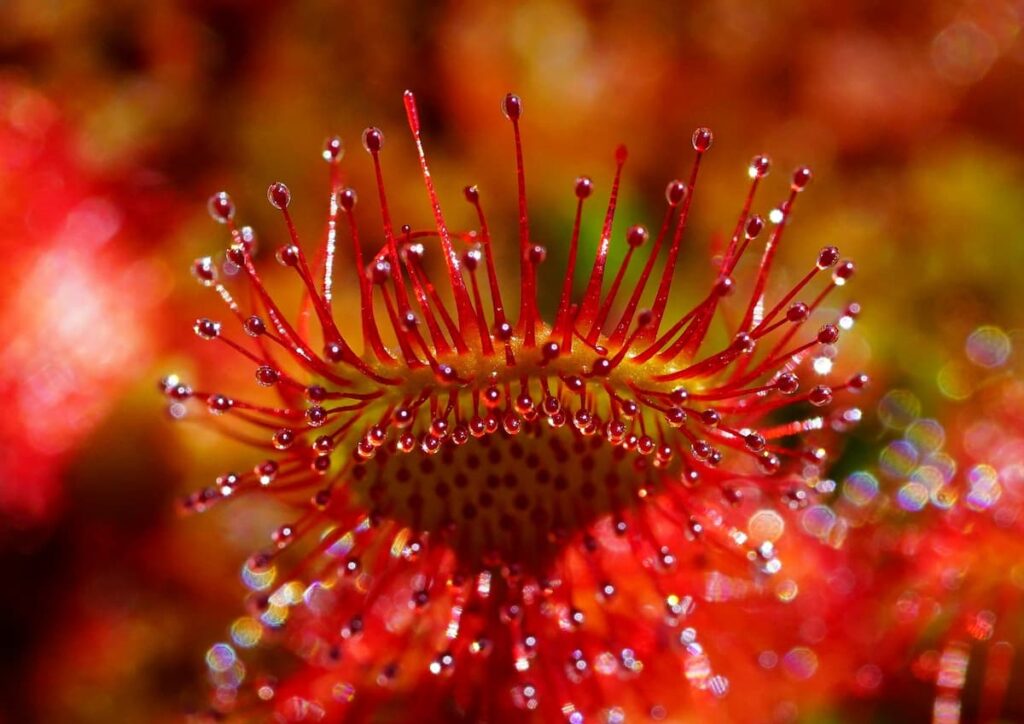
Sundews are carnivorous plant that gets their nutrients from bugs and insects. The plant has small, sticky leaves that trap prey. Sundews grow well in tropical and subtropical regions around the world. Growing Sundews at home is easy if you have the right environment. These plants need high humidity and plenty of sunlight. They can be grown in soil or hydroponically. With proper care, these fascinating plants can thrive for many years.
How to grow Sundews at home
Types of Sundews
There are three main types of Sundews, pygmy, tuberous, and temperate. Sundews use sticky hairs to trap insects for food.
- Pygmy Sundews form small rosettes that can grow quite large. They prefer shady spots with much moisture, so you often find them in bogs or marshes. Their small leaves make them easy to propagate by cutting off a piece of the plant with roots attached and planting it in moist soil.
- Tuberous Sundews are heart-shaped with waxy tips that curl inward when they don’t have a light source. They can be easier to grow than Pygmy Sundews. Because they require less shade and water, they are also less likely to have predators like slugs and snails that eat the insects trapped by their sticky hairs.
- Temperate Sundew lives in areas that have cold winters where snow can fall but also warm enough for plants to live without help from melted snow cover.
Soil requirement for growing Sundews at home
Most Sundews prefer acidic soil with a pH below 7. If you have too alkaline soil, you can lower the pH by adding sulfur or peat moss. You can also grow Sundews in potting mix designed explicitly for carnivorous plants. To ensure your Sundews have enough nutrients, add a slow-release fertilizer designed for acid-loving plants to the soil before planting. You can also top-dress the soil around your Sundews with compost or organic matter every few months. Once you have suitable soil, it is essential to remember that Sundews like their roots to be moist. When you are potting your plant, make sure to water it thoroughly before adding more soil on top. If the roots are too dry, they cannot support the plant properly.
In case you missed it: 16 Fragrant Spring-flowering Shrubs: How to Grow, Planting, and Care
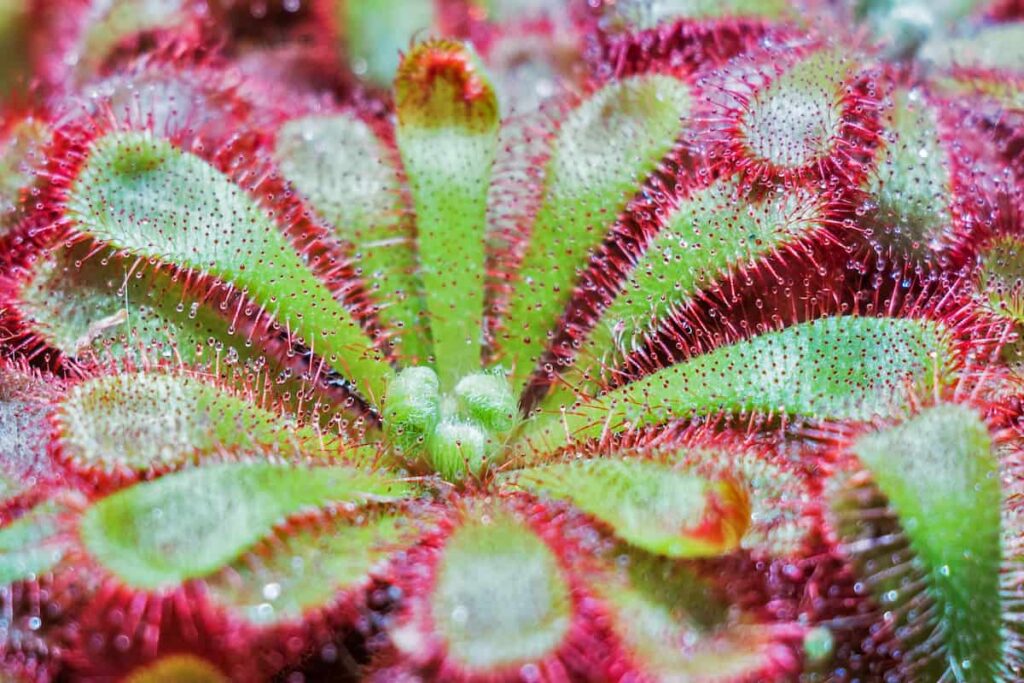
Climate requirement for growing Sundews at home
To ensure your Sundews thrive, creating the right conditions is essential. They like bright light but can tolerate some shade and prefer humid conditions. If you have a dry climate, you can create a more humid environment for your plants by grouping them or using a pebble tray. Sundews also prefer warm temperatures and will do best in a range of 21°C to 30°C. Just be sure to provide them with bright light and warmth. For Sundews to thrive, they require a warm and humid climate. If you live in an area with cold winters, it’s best to grow your Sundew as a houseplant. However, if you have a warm climate, you can grow your Sundew outdoors.
Water requirement for growing Sundews at home
While they can grow in various habitats, they typically prefer wet or moist areas. You’ll need to water your Sundews more frequently than other houseplants. The best way to water Sundews is to use a spray bottle or mister to mist the leaves evenly. Be sure to avoid getting water on the plant’s crown, as this can lead to rot. Water your Sundew plants once or twice weekly to keep the leaves moist. If your plants start to look wilted or droopy, it’s a sign that they’re thirsty and need more water.
These carnivorous plants love damp conditions and will do best in a humid environment. When watering your Sundews, use distilled or rainwater instead of tap water. This will help prevent the build-up of minerals that can damage the plants. Sundews can be sensitive to overwatering, so it’s important to always check the soil before watering. If the soil is already moist, there’s no need to water the plant. With proper care, your Sundews will thrive and provide you with many years of enjoyment.
Propagation of Sundews
From seeds
To propagate Sundew seeds, you must start with a fresh batch. You can purchase these from a nursery. Sow the Sundew seeds on the surface of the peat moss and lightly cover them with more peat moss. Place the tray in a warm, sunny location and moisten the peat moss. The seeds should germinate within 2 to 3 weeks. Once the seedlings sprout, you can transplant them into pots filled with peat moss and sand. You should keep the soil moist and the pots in a bright, indirect light. The seedlings will grow rapidly and be ready to transplant into the garden within 4 to 6 weeks.
In case you missed it: How to Grow Sage from Seed to Harvest: Planting and Care
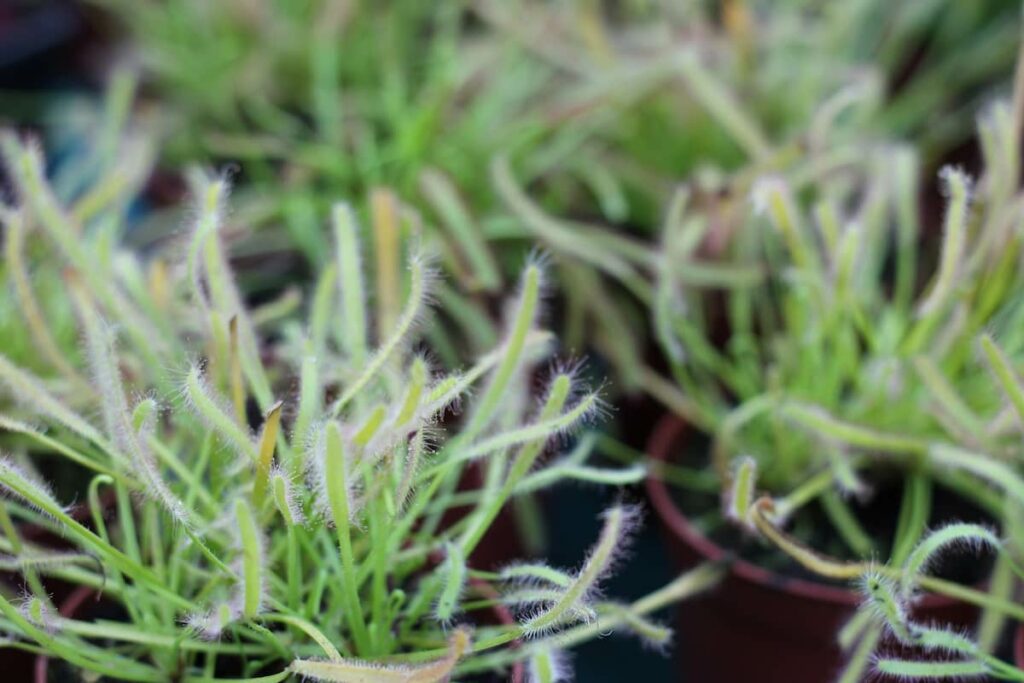
From cuttings
Although Sundews can be grown from seed, it is much easier to propagate them from cuttings. However, the best time to take cuttings is in late summer or early fall. To take a cutting, use a sharp knife or gardening shears to remove a piece of the plant that includes both a leaf and a portion of the stem. The cutting should be about 4 inches long. Cut just below a node, where the leaf meets the stem.
Once you have your cutting, dip the end into rooting hormone powder or gel. This will help encourage roots to form on the cutting. Then, it would be best to plant the cutting in moistened potting mix. Be sure to keep the potting mix moist but not soggy. Place your pot in an area that gets indirect sunlight and keep an eye on it for signs of new growth. Once roots have formed and new leaves have grown, you can transplant your Sundew into a larger pot or garden.
Planting
Growing Sundews in the backyard
Growing Sundew in your backyard is a great way to add an exotic touch to your landscaping. These stunning carnivorous plants are native to tropical and subtropical regions but can be easily grown in most climates with little care. Choose a sunny spot in your yard that has well-draining soil. Sundews prefer full sun but will tolerate light shade. Peat moss or composted leaves work well.
Plant your Sundews in raised beds to improve drainage. Water regularly, keeping the soil moist but not soggy. Sundews are sensitive to overwatering. Feed your Sundews once every two weeks with an insecticide-free fertilizer during the growing season (spring and summer). A 10-10-10 fertilizer works well. You can easily grow healthy and vibrant Sundews in your backyard with care.
Growing Sundews in pot
To grow Sundew in pots, you’ll need a pot that’s 8 inches wide and has drainage holes. Fill the pot with a mixture of equal parts sphagnum peat moss and perlite, and wet it thoroughly. Then, plant your Sundew in the pot so the crown is barely covered with soil. Water the plant well, and place it in a sunny spot.
In case you missed it: 45 Key Rules for Backyard Gardening: From Planning to Reducing Production Cost

Your Sundew will need to be watered frequently, so check the soil regularly. Be careful not to over-water your Sundew, which can lead to root rot. Every two weeks, fertilize the Sundew with a balanced fertilizer diluted to half strength. During the winter months, you can cut back on fertilization to once a month. If you live in an area with cold winters, you’ll need to bring your potted Sundew inside when temperatures drop below 10°C. Put the plant in a bright spot near a window, and continue to water and fertilize it as usual.
Sundews care
Fertilizer requirement for growing Sundews at home
Fertilizers are an essential part of growing Sundews. They help provide the plant’s nutrients to grow and thrive. There are a variety of fertilizers that can be used, but it is essential to choose one that is designed explicitly for carnivorous plants. Over-fertilizing can harm your Sundews, so it is essential to use the correct amount.
When choosing a fertilizer for Sundews, there are a few things to remember. The first is that it should be high in nitrogen. This is because nitrogen is essential for plant growth. Sundews are also heavy feeders, so the fertilizer should be applied every two weeks. Sundews prefer a slightly acidic environment, so a fertilizer with a low pH is ideal. You can find fertilizers designed explicitly for acid-loving plants at your local gardening store. Too much fertilizer can burn the plant’s roots, so it is essential to apply it carefully. If you need help with how much to use, use less rather than more.
Pruning for Sundew
Pruning for growing Sundew is essential to keeping your plant healthy and vibrant. While low-maintenance, Sundews require occasional pruning to remove old, dying, or yellowed leaves. Pruning also encourages new growth, so your Sundew can continue to thrive. To prune your Sundew, snip off any yellowed or dead leaves at the base of the plant. You can trim long, leggy stems to promote a fuller, bushier plant. When pruning, use sharp scissors or shears to avoid damaging the delicate leaves. Sundews are tough plants and can handle being pruned pretty aggressively. So don’t be afraid to trim your plant if it looks overgrown.
In case you missed it: How to Grow Dill from Seed to Harvest: Soil, Propagation, Planting, and Care
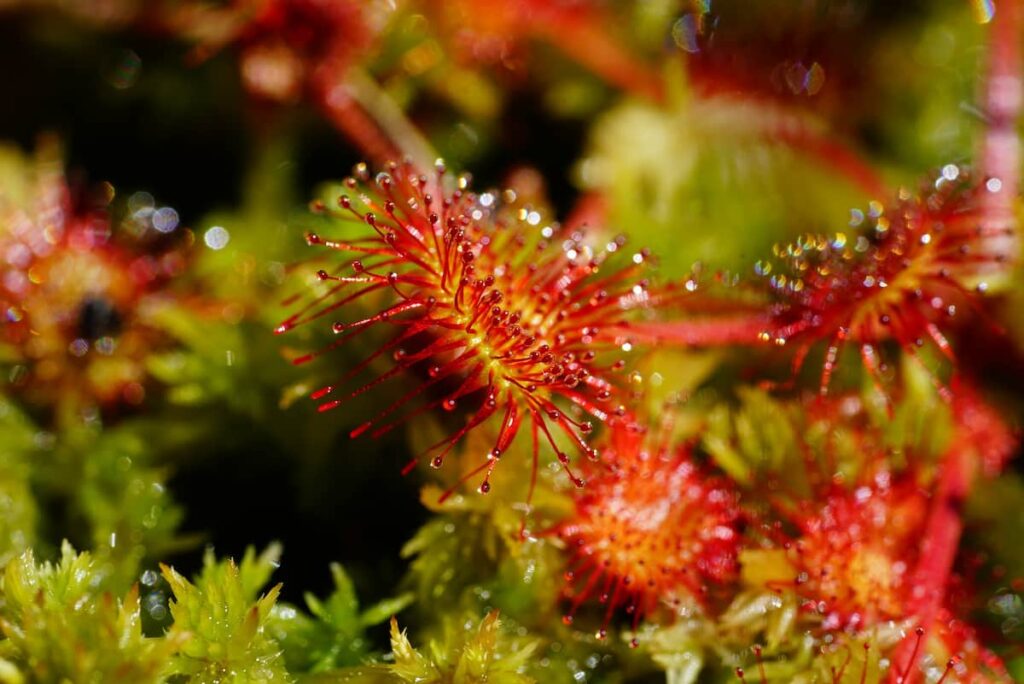
Sundews care in winter
Dormancy is a period in which plants change their function. This occurrence is often tied to environmental factors, like temperature, light exposure, and seasonal changes. Dormancy is also an integral part of the life cycle for some plants, including Sundews. Sundew plants require darkness and cool temperatures to enter dormancy. Perhaps you keep your plant in an area that gets direct sunlight or is too warm. If so, the plant won’t go into dormancy properly and will be unable to bloom when the plant returns to regular activity.
If you’re interested in growing Sundews, start by obtaining a few pots and planting them indoors to see what kind of care they need. These plants are easy to grow and will benefit from the same general care as other indoor plants. Though they need some light, they can survive in low-light areas as long as they receive enough light to keep their leaves green and healthy. Sundews need less water than regular cacti, succulents, or other plants. Once the soil has completely dried out, it should only be watered once a week.
Pests and Diseases of Sundews and their control
Aphids
These insects are most likely to attack your Sundew when it’s young. However, aphids can infest mature plants as well. Aphids can be removed from plants by carefully removing them with tweezers or dipping the leaf in soapy water.
Mealybugs
There is another common pest for Sundews: mealybugs. These insects eat the plant’s sap and leave behind honeydew, which draws ants, more bugs, and other pests, which can also damage your plant. The best way to get rid of mealybugs is by spraying them with alcohol or applying insecticidal soap every few days over several weeks until they’re gone.
In case you missed it: Easy to Grow Orchid Plants for Beginners: Soil, Propagation, Planting, and Care
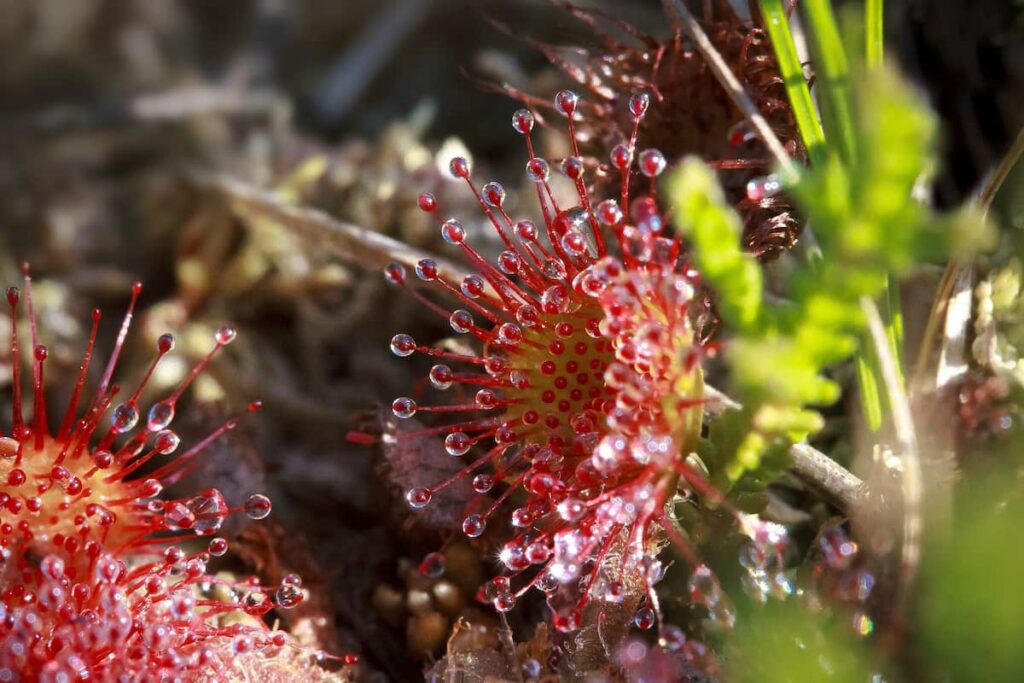
Spider mites
The spider mites typically appear as brownish-red or black bugs with webs around your plant’s leaves. To remove these pests by hand, you’ll need to know what’s occurring in your garden. Chemical sprays could damage the sensitive leaves of Sundew.
Fungus
A fungus is a disease that can affect the roots of your Sundew plant. The symptoms are yellowing of the leaves. If you notice these symptoms, it is best to isolate your Sundew from other plants in your collection until you figure out what type of fungus is affecting it.
Conclusion
To conclude, Sundews are easy to grow at home and make a great addition to any garden. With a little bit of care, they can thrive indoors or outdoors. When choosing a Sundew, pick one appropriate for your climate and growing conditions. With a suitable variety, you can have beautiful Sundews that add color and interest to your home.
- How to Grow Hibiscus from Flower
- Plantation Ideas for Home Decoration: A Beginners Guide
- Flower Garden Designs and Layouts for Beginners
- Planting and Spacing Techniques in Papaya: A Beginner’s Guide
- Growing Gold: Essential Techniques for Planting Pineapples
- How to Make Kalanchoe Plant Bushy: Home Remedies and Solutions
- 11 Reasons Why Your Gardenia is Not Blooming: Home Remedies and Solutions
- Eco Elegance: The Guide to Designing a Drought-Tolerant Landscape
- Gardening on a Slope: Strategies for Hillside Landscaping
- Nourish and Flourish: Top Organic Mulches for Thriving House Plants
- Everything You Want to Know about Indian Mogra Flower: Discover Uses and Growing
- Green Thumb Success: Expert Tips for Cultivating Greenhouse Pumpkins All Year Round
- Maximize Growth & Flavor: The Ultimate Guide to Companion Planting in Herb Gardens
- How to Control Rhododendron Problems Naturally: Home Remedies and Organic Ways to Fix Them
- Natural Magic: The Remarkable Benefits of Cinnamon for Plants
- Best Steps to Revive Dying Tulip with Natural and Organic Treatment
- 10 Reasons Why Your Angel Trumpet is Not Blooming: Remedies and Treatment
- How to Fix Periwinkle Leaf and Flower-Related Problems: Natural Remedies and Solutions
- How to Fix Zinnias Leaf and Flower Problems: Discover Natural and Home Remedies
- Organic Steps to Induce Lemon Tree Flowers: A Comprehensive Guide
- Bloom Booster: Crafting the Perfect Homemade Bougainvillea Fertilizer
- Optimizing Growth: A Guide to Applying NPK Fertilizer for Potted Plants
- 10 Best Homemade Fertilizers for Rubber Plant: DIY Recipes and Application Method
- How to Boost Female Pumpkin Flowers: Effective Steps for More Flowers and High Yields
- Transform Your Indoor Garden: Top Benefits of Pink Salt for Houseplants
- 10 Best Homemade Fertilizers for Peacock Plants (Calathea): Easy DIY Guide
- Unlock Blooms: 9 Reasons Why Your Potted Chrysanthemum is Not Blooming
- 8 Reasons Why Your Potted Hibiscus is Not Blooming: Fix it with Simple Solutions
- Unlock Blooms: 9 Key Reasons Your Potted Frangipani Won’t Flower
- 10 Reasons Why Is My Ice Plant Not Blooming: Remedies and Treatment
- 10 Reasons Why My Potted Hydrangea Not Blooming: Treatment and Remedies
- 10 Reasons Why is My Wisteria Not Blooming: Remedies and Treatment
- 10 Reasons Why is My Goldfish Plant Not Blooming: Remedies and Treatment
- Maximize Your Space: Ultimate Guide to Balcony Gardening with Grow Bags
- 10 Reasons Why Your Iris is Not Blooming: Remedies and Treatment
- 10 Reasons Why Your Anthurium Plant is Not Blooming: Treatment and Remedies